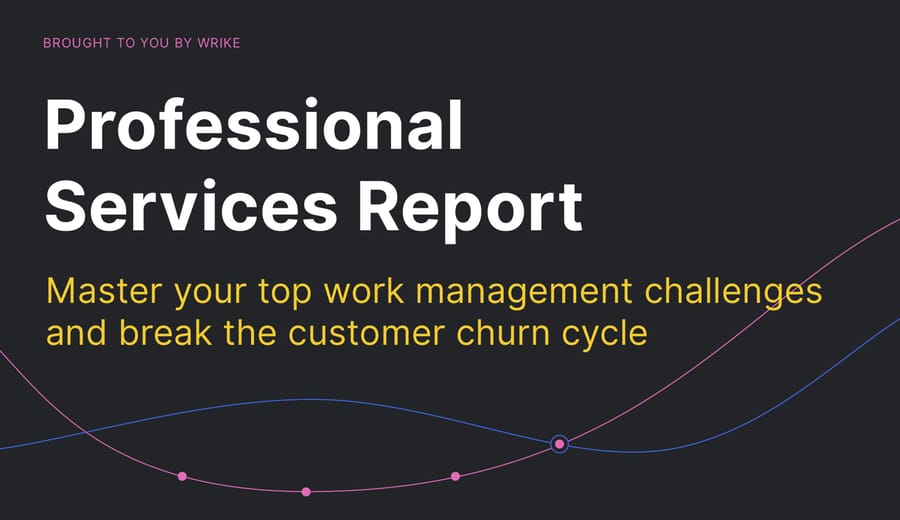Key takeaways:
- What is CRM? Customer Relationship Management (CRM) is the process of maintaining and nurturing relationships with customers to boost business revenue.
- Why is a CRM strategy important? A solid CRM strategy provides personalized service, data-informed decisions, reputation enhancement, and increased customer loyalty.
- What are the steps to create a CRM strategy? Define goals, identify customers, understand their journey, spot areas for improvement, implement strategic changes, support with processes, and measure performance.
- How can CRM software help? CRM software, like Wrike, organizes customer data, streamlines processes, and enhances team collaboration for effective relationship management.
- What are the benefits of effective CRM? It fosters better customer engagement, improves retention rates, and ultimately increases company revenue.
Think of any relationship — whether it’s with a family member, friend, romantic partner, colleague, or anyone else in your life.
What keeps that bond strong? Constant and steady effort plays a big role.
A one-time encounter doesn’t automatically lead to a sustained relationship (because you probably haven’t kept in touch with every stranger you bumped into in the grocery store or every random person you sat next to on a plane).
Relationships of any kind require investment. They take thought, empathy, personalization, and consistent communication — and that’s especially true when it comes to a business’s relationships with its customers.
The most successful businesses know they can’t let their customers make a single purchase and then ride off into the sunset. Instead, they put their all into a CRM strategy to maintain those ties — and, as a result, drive their revenue.
What is customer relationship management?
Customer relationship management (CRM) is the process of maintaining and nurturing relationships with your customers, with the ultimate goal of boosting the business’s bottom line.
Your CRM approach will encompass anything and everything you do to sustain solid bonds with your customers — every single step and touchpoint.
However, the term “CRM” has also been adapted to focus specifically on the technology that companies use to organize their customer contacts and manage their relationships. If you see phrases like “CRM system,” “CRM software,” “CRM platform,” or “CRM solution,” they’re referring specifically to a digital tool that helps facilitate the details of customer relationship management.
Why is it important to have a good CRM strategy?
Your CRM strategy is the driving force behind your efforts to maintain connections with your customers. Pulling together this sort of documented game plan requires some time and effort, but it’s well worth it. A CRM strategy offers a number of benefits, including:
- Providing a better and more personalized service: A customer relationship management strategy gives you a more holistic view of your overall customer journey, as well as your history with each individual lead or customer. That context helps you deliver a more personalized experience and better service, rather than relying on form responses and generic interactions. When 71% of consumers expect companies to deliver personalized interactions, the ability to go beyond universal and seemingly empty communication is important.
- Making data-backed decisions: That bird’s-eye view into the phases of your customer journey, what leads are in the pipeline, and more gives you data and insights you can use to make more strategic improvements moving forward. For example, perhaps you’ll see that customers are churning at a specific point in the journey or that a certain response time yields the best results.
- Improving your reputation: When you deliver personalized support and show a true interest and engagement in your relationships with your customers, you enhance your company’s reputation. You come off as more helpful, committed, and trustworthy — and customers are far more likely to recommend you to others as a result.
- Increasing customer loyalty and retention: Can you really blame customers for hitting the road if they only hear from you at random intervals? Customer relationship management strategies nudge you to provide value and support to customers consistently and regularly. That increases their sense of loyalty and encourages them to stick with you — even between and after purchases.
When you put all of those together, you get to the biggest benefit of a CRM strategy: increased company revenue and profits.
Winning customers is hard (in fact, one HubSpot survey found that generating traffic and leads is the top challenge that marketers will focus on in 2023). So, when you get an interested and engaged customer, you want to make the most of that opportunity. A thoughtful CRM strategy helps you maximize that relationship in every way you can.
7 steps to creating a CRM strategy
There are plenty of advantages related to effective customer relationship management, but making it happen requires a bit more than simply saying, “We need to keep in touch with our customers more!”
Like any other type of business initiative, you need a plan in place — a single source of truth that you and your team can use to plot out and improve the way you interact with your customers and nurture those relationships.
That’s where your CRM strategy comes into play. It’s your roadmap for enhancing the customer experience and keeping the lines of communication open — all without coming off as overly pushy or pesky.
Here are seven steps to creating your own CRM strategy so you can start reaping the benefits.
1. Define your CRM goals
The basic goal of any sort of customer relationship management strategy is pretty straightforward: to improve relationships with your customers.
But when you’re pulling together your strategy, you need to get more specific than that. What does that process actually look like? How will you tell when you’re successful?
Your first step — before ever putting pen to paper on your actual strategy and improvements — is to iron out your goal (or goals, if you have several). For example, you might want to:
- Improve your customer retention rate
- Increase customer upgrades
- Boost customer satisfaction scores
Use the SMART goal framework to come up with a CRM objective that helps you and your entire team align on what exactly you’re working towards — and what success ultimately looks like.
2. Identify your customers
If you want to have stronger and more beneficial relationships with your customers, you first need to understand exactly who they are.
No, this doesn’t mean you need to commit everybody’s name or location to memory. Rather, you need to understand the general segments that your typical customers fall into. What are their goals? And their challenges? How does your company help?
Many companies find it helpful to create buyer personas or marketing personas, which are representations of your target customer that are built upon real data and experience. For example, you might have one persona that represents customers who are avid outdoor enthusiasts and another to represent parents who want to get their families outdoors.
The point here is to dig in and understand who your typical customers are and what makes them tick. That helps you fine-tune your outreach and customer relationship management strategies to address those particular audiences, rather than broad and non-specific groups of people.
3. Understand your typical customer journey
One of the best ways to bolster any relationship is to put yourself in the other person’s shoes — to understand exactly what they go through and how that feels for them.
That’s exactly what you’re doing when you map out your customer journeys. You’re assuming the role of your customer and visualizing what their typical experience and progression with your company involves.
The most straightforward way to do this is to literally draw out your customer journey as a flowchart of sorts. Your starting point should be the way that potential customers discover your company — meaning you’ll need to map out different journeys for every possible entry point.
For example, map out a journey for customers who first encounter your brand when they click on a blog post that appeared in their search results. Then they enter their email to receive a supplemental resource. Then they start receiving your marketing emails … and so on.
This might feel like a lot of elbow grease to invest, but it’s worth it to get a grasp on the different ways customers can progress your sales funnel. Building this understanding now will help you implement more targeted and impactful customer relationship management strategies later.
4. Spot areas for improvement
You’ve mapped out your journeys. Now it’s time to look at them with a magnifying glass. Where are things falling apart? What do you need to improve?
You might see that you have no way to capture people who visit your website for the first time so that you can proactively reach out to them with an offer. Or maybe you’ll notice that people leave quickly after signing up because they don’t receive the onboarding support they were hoping for.
As you look at your customer experiences and relationships with this critical (but necessary) lens, it can also be smart to review previous customer feedback. Whether people complain about a long response time or a lack of personalization in their interactions, those hard-to-hear insights will help you improve your CRM strategies even more moving forward.
5. Roll out strategic changes
You know what needs to be improved — now how are you going to make it happen? This step focuses on identifying the changes you’ll implement to improve your customer relationship management.
Whether it’s creating an automated “welcome” email workflow for new customers, setting up a knowledge base for self-service information, creating a schedule for customer outreach, or starting an exclusive community where your customers can interact with each other, this is your time to brainstorm with your team and think of all the ways you could better engage with your customers all the way through their journeys.
6. Support changes with processes
Investing in customer relationship management can’t be something that you take care of when you think of it or have the time. To reap the benefits, these efforts need to be steady staples for you and your team.
That’s why it’s important to create processes to support the improvements you identify. Doing so means that you and your team can integrate those practices as part of your daily routines and rest assured that they actually get done.
From creating timelines and assigning specific task owners to drafting templates and using automation, put workflows and standardized procedures in place so that your CRM strategies are implemented reliably and painlessly.
It’s also worth looking into a CRM platform (Wrike works great for this!). Software makes it way easier to organize and track all of your processes and CRM strategies.
7. Measure your performance
Improving your customer relationship management is an ongoing process — it’s not something you’ll figure out once and then watch as the magic happens.
Part of your CRM strategy needs to include regular opportunities to evaluate your progress. Return to the CRM goals you set in the first step and check to see how you’re performing against those (this is another step where a CRM solution comes in handy).
This gives you the chance to make any other necessary changes or improvements more proactively. Like any other type of strategy, you want to stay nimble and adaptable.
Bring your CRM strategy to life with Wrike
There’s a lot that goes into a successful CRM strategy — particularly as your company grows and your customer base gets bigger along with it. What you might have been able to manage in a few disparate spreadsheets can quickly transform into a jumbled and confusing mess.
You can save yourself a lot of hassles and headaches by implementing a CRM solution from the start. From organizing your customer contact information to categorizing based on the various phases of your customer journey or sales funnel, Wrike offers a ton of features to help you master your CRM approach in an organized and efficient way:
- Clear task assignments to boost accountability and reduce rework
- Automations to streamline your customer relationships
- Easy and intuitive lead organization
- Tags for each stage of your sales funnel
- Real-time communication tools
- Reports to analyze performance, find patterns, and refine your techniques
- Integrations with other popular sales apps
- Customizable templates to save you time
Using Wrike means you and your team can spend less time figuring out the logistics and more time focused on what matters most: nurturing your relationships with your customers.
Get started with a free trial of Wrike today.








